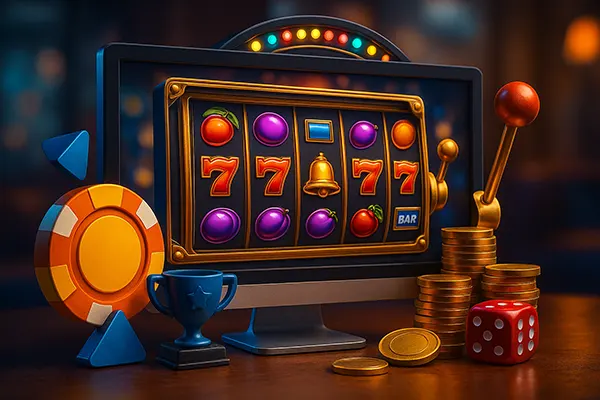
The Effect of Microtransactions and Gamification in Slots: Does It Really Change the Odds of Winning?
In 2025, the iGaming industry has fully embraced microtransactions and gamification as tools to enhance player engagement. These mechanisms, inspired by mobile and console gaming, have transformed the way slot games are designed and experienced. But behind the appealing design and levelling systems lies an important question: do these features actually influence a player’s chances of winning, or are they purely psychological motivators?
Understanding Microtransactions in Modern Slot Games
Microtransactions are small in-game purchases that allow players to access additional features, spins, or cosmetic elements. In online slots, they often take the form of bonus spins, higher stake options, or the ability to skip waiting times. Developers use these mechanisms to increase engagement and encourage repeat play, similar to in-app purchases in mobile gaming.
While these purchases can give the illusion of progress or control, they do not alter the fundamental odds of a slot. The random number generator (RNG) — the system that determines outcomes — remains unaffected by whether a player spends extra money. In other words, microtransactions impact the experience but not the mathematical probability of a win.
Nevertheless, the introduction of paid add-ons has raised ethical concerns. Regulatory authorities in 2025, such as the UK Gambling Commission and the Malta Gaming Authority, have introduced stricter rules requiring transparency about the true effects of such purchases. Operators must now disclose that microtransactions do not provide any statistical advantage to the player.
Psychological Impact of In-Game Purchases
Microtransactions can trigger reward-based behaviour patterns, similar to those observed in social media engagement loops. The sense of instant gratification from buying an extra spin or unlocking a visual reward can make players believe they are closer to a win, even when odds remain constant.
Recent behavioural studies conducted in 2024–2025 reveal that players often overestimate their influence over outcomes when given interactive purchasing options. This effect, known as the “illusion of control”, contributes to longer play sessions and increased spending.
Developers and regulators are now seeking balance — allowing monetisation through microtransactions while ensuring that players are not misled about their true purpose. Educational pop-ups and spending limit tools have become common features in responsible gaming initiatives.
Gamification and the Rise of “Player Levels”
Gamification — the integration of game-like elements such as levels, badges, and experience points — has become a defining trend in slot design. Players can now progress through stages, unlock new avatars, and earn rewards for regular play, making the experience feel more dynamic and personalised.
These systems are effective because they appeal to the human desire for achievement. Levelling up or earning virtual trophies offers satisfaction even when real-money wins are infrequent. This emotional reinforcement helps maintain engagement across long sessions, keeping retention rates high for online casinos.
However, despite the strong psychological effect, gamification does not modify the core return-to-player (RTP) percentage of a slot. Whether a player is at level one or level fifty, the RNG ensures the same statistical fairness. The “progress” displayed on-screen serves as a motivational tool rather than an indicator of better odds.
The Balance Between Engagement and Transparency
Responsible game developers now integrate educational pop-ups within gamified slots to clarify that achievements and visual progress are unrelated to payout probabilities. This shift aims to prevent misunderstandings, particularly among casual players who may associate levelling up with improved performance.
In 2025, the best-performing slot providers have introduced optional “responsible play dashboards” where users can track spending habits, level progression, and session times. This data-driven transparency helps maintain trust and promotes informed decision-making among players.
Ultimately, gamification succeeds when it enhances entertainment value without misleading users. By maintaining fairness and open communication, developers can combine engaging design with ethical responsibility.

Regulatory Oversight and the Future of Slot Design
The evolving nature of microtransactions and gamification has prompted regulators to adapt. Licensing bodies now require detailed disclosure of all paid mechanics and their non-impact on odds. These transparency rules aim to protect players while allowing creative innovation within safe boundaries.
Industry analysts predict that by 2026, many online casinos will adopt certification marks verifying compliance with responsible monetisation standards. This includes demonstrating that in-game payments are optional and do not influence random outcomes.
At the same time, developers are exploring ethical monetisation alternatives — such as purely cosmetic upgrades or community challenges — that reward participation without increasing spending pressure. The focus is gradually shifting from financial motivation to user satisfaction and trust.
Player Awareness and Informed Participation
As awareness grows, players are becoming more selective about where they play. Review platforms and watchdog organisations now rate casinos based on transparency in microtransactions and fairness of gamification systems. These public ratings have begun influencing user behaviour more than promotional campaigns.
Modern players seek clear information about odds, bonus terms, and spending options. This trend has forced the industry to prioritise accountability, as players reward honest operators with long-term loyalty.
Looking ahead, the intersection of microtransactions and gamification will likely remain a key feature of online slots — but its success will depend on maintaining ethical standards and player trust, rather than manipulating perceptions of winning chances.
